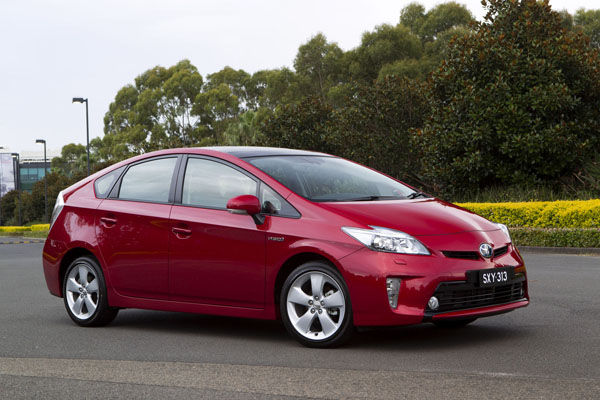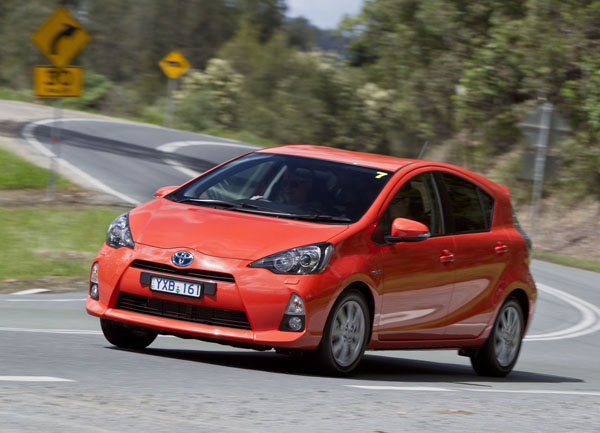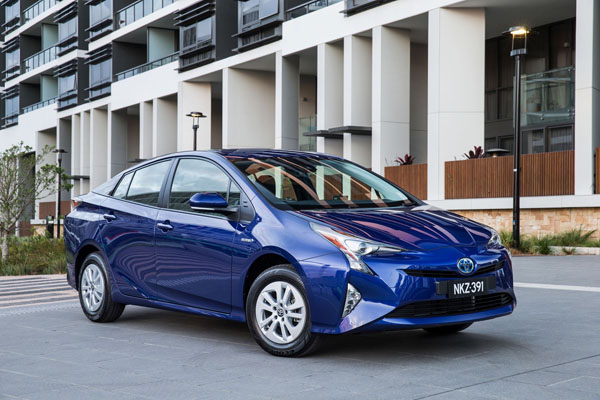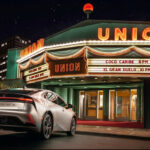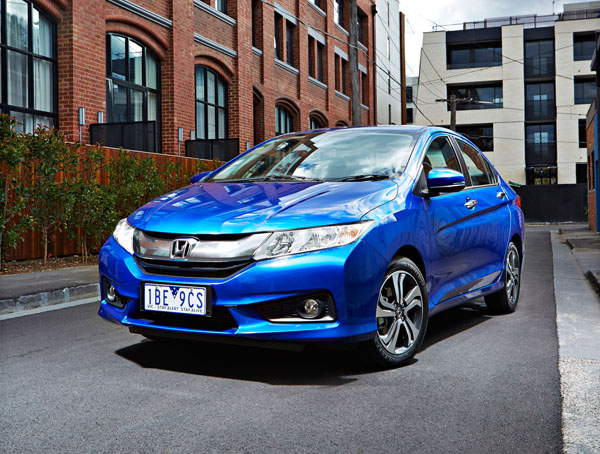Toyota Prius is not an electric car, rather one it’s mainly powered petrol engine, which is assisted by an electric motor. Originally it had a four-cylinder 1.5-litre petrol engine. This was increased to 1.8 litres with the June 2009 model change, at the same time the electric motor’s output was also upgraded. These 2009 models are the first being examined in this used car review.
Note that the Toyota Prius sold in Australia is not a plug-in electric car. Plug-ins are sold in other countries but Toyota Australia feels they would be slow sellers here.
For relatively short distances, seldom more than a few hundred metres, a Prius can run purely as an electric car. It’s biggest advantage is that energy normally lost when slowing down and/or braking is harvested and put back into batteries. There’s also a saving on brake pads as they have less work to do.
Prius gen-three arrived in June 2009 and ran until early 2016 and is probably the one to aim for. The fourth generation came to us in February 2016. The new body has a sleek, sporty look and improvements were made to aerodynamic efficiency,
With even lower fuel consumption it was built on a new platform, and while not exactly sporty it does give a reasonably enjoyable drive.
Though it’s styling heads in the space-age direction the Prius is a relatively conventional five-door five-seat hatchback, it has decent interior room and little boot space is lost to battery bulk.
Comfort is good, though not to the same high standard as the Toyota Corolla and Camry, both of which have been adapted to suit Australian driving conditions and driver preferences.
Some rough road can really upset the Prius’ suspension. If there are poor roads in your home area it’s smart to include them in your pre-purchase test drive.
Handling is fine, but not exactly inspiring from a keen driver’s point of view. Nor is it intended to be. This is a clean-air car not a sporty machine.
Quality of finish is good and Prius last well. Indeed quite a few are used as taxis in many Australian cities and it’s not unusual to see them with 300+ kilometres on the clock. Perhaps avoid these as secondhand buys as their remaining life may be limited. Then again, if the price is right it might be worth a gamble.
Owners can do minor servicing on a Prius, but anything beyond that should be done by a trained Toyota or Lexus mechanic.
Insurance costs are about average for a car of this size, with no real signs of a loading because the Prius is something out of the ordinary. Shop around, but make sure you’re doing accurate comparisons.
As well as the standard Prius two other models share the name. The Prius C is a small city car, Prius V is a sort of station wagon. Neither has been a sales success.
WHAT TO LOOK FOR
Don’t even think of buying a Prius without having it inspected by a Toyota or Lexus technician specifically trained on hybrids.
Check the service history is up to date as this can affect the battery warranty.
Look for signs of a taximeter having been removed. Taxi use may be indicated by worn trim, carpets and boot floor.
Other than that carry out the routine checks for body damage, previous panel repairs and uneven tyre wear.
The petrol engine won’t start when you fire up a Prius, instead a Ready light will show on the dash and car will start off as an electric vehicle. If the engine does start up immediately either the battery is flat or it may have died.
There have been some updates to the Prius and recalls for several relatively minor items. Click onto www.productsafety.gov.au/products/transport/cars/ for details.
HOW MUCH?
Expect to pay from $6000 to $9500 for a 2009 Prius; $8000 to $12,000 for a 2011 Prius; $9000 to $14,000 for a 2009 I-Tech; $11,000 to $17,000 for a 2014 Prius; $14,000 to $20,000 for a 2016 Prius or a 2014 I-Tech; $16,000 to $23,000 for a 2017 Prius; and $20,000 to $28,000 for a 2017 I-Tech.
CAR BUYING TIP
If buying a specialised vehicle like a hybrid take even more care than usual to ensure all is well with it.
RECALLS: To browse recalls on all vehicles go to the ACCC at: www.productsafety.gov.au/products/transport/cars/




